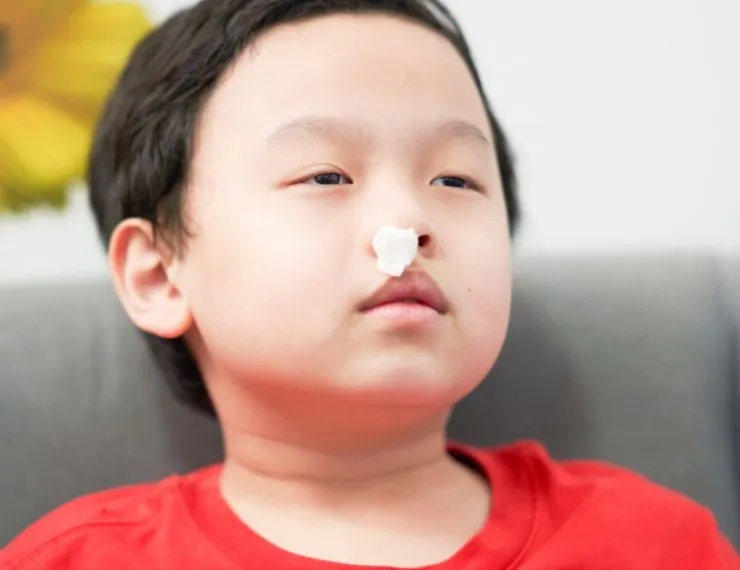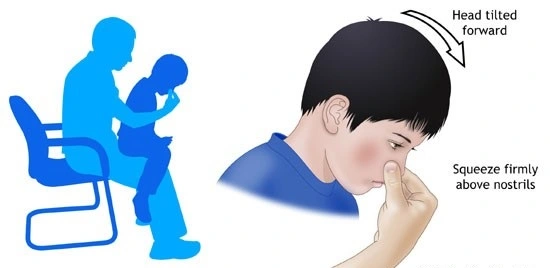
There are two main types of nosebleeds: Anterior and posterior nosebleeds, with anterior bleeds being much more common. In an anterior nosebleed, the bleeding comes from the veins in the front part of the nose, typically in the septum (which is the wall that divides the nostrils.) Usually the bleeding is only from one nostril and these tend to stop relatively easily, but can reoccur. In a posterior nosebleed, the blood originates from vessels deeper in the nasal cavity and thus more frequently involves both nostrils and can be more serious and harder to stop.
Nosebleeds can be caused by various factors, including dry air, nasal irritation or injury, allergies, colds/viruses, underlying medical conditions (ie hypertension, blood clotting disorders) or medications (NSAIDs, nasal steroid sprays). In children, as you might guess, nose picking is one of the more common causes (Pro tip: don’t ask if they just picked their nose, ask which finger they picked their nose with).
Dos and Don’ts for stopping a nosebleed:

(Image credit: https://www.rch.org.au/clinicalguide/guideline_index/epistaxis)
|
DO |
DON’T |
| Stay calm! Nosebleeds can be frightening, but are rarely serious | Panic! If they cry or can’t sit still, it may take longer to stop the bleed. |
| Keep your child in a seated or standing position and tilt their head slightly forward | Have the child lie down or tilt their head back |
| Show them how to breathe through their mouth | Stuff anything into their nostril |
| Pinch the lower half of the nose (the soft part) between your thumb and forefinger and hold for 10 minutes | Have them blow their nose |
| Let go after 10 minutes, wait a few minutes to be sure bleeding has stopped (if not, hold again and call your doctor if it does not stop after another 10 minutes) | Peek to see if bleeding has stopped before 10 minutes is up |
How can we prevent nose bleeds?
- Keep the Nasal Passages Moist:
- Nose sprays: Use a saline nasal rinse or spray regularly to prevent drying. Many nose sprays also contain aloe or other ingredients to help keep the nostrils moist.
- Vaseline: Apply a thin layer of petroleum jelly inside the nostrils, especially during dry or cold weather.
- Use a Humidifier in their bedroom to increase the moisture in the air, especially during the winter when indoor heating systems can dry out the air.
- Stay Hydrated:
- Ensure that your child stays well-hydrated by drinking enough water throughout the day.
- Avoid Nose Picking:
- Instruct your child not to pick their nose, as this can damage the delicate blood vessels inside the nostrils. Once the mucosa is irritated, nosebleeds can more easily reoccur as the scab takes some time to heal.
- Identify and Avoid Triggers:
- Determine if there are specific triggers, such as allergens or irritants, that may be causing the nosebleeds. Take steps to minimize exposure to these triggers.
You should reach out to your doctor if nosebleeds are not stopping after 20 minutes of holding pressure, if they are happening frequently or are becoming more severe, or if they occur after an injury. Please feel free to reach out to your pediatrician or doctor if you have concerns.
Read Also: Pediatric Seasonal Allergies
Jackie Phillips, MD, January, 2024
Take the first step towards improving your child’s health with pediatric integrative medicine. Call The Village Doctor at (650) 851-4747 or Contact us to learn more about the practice.


